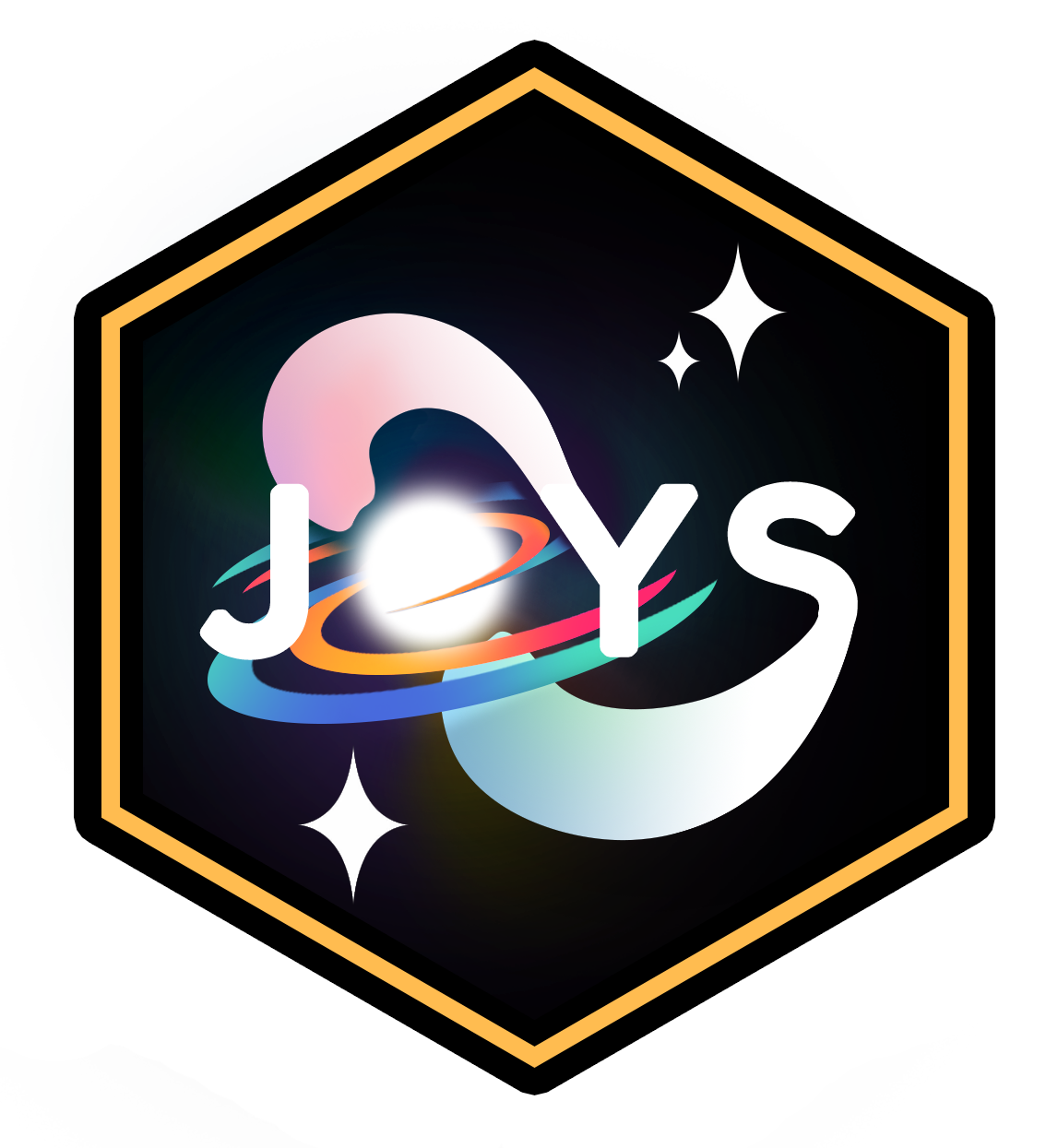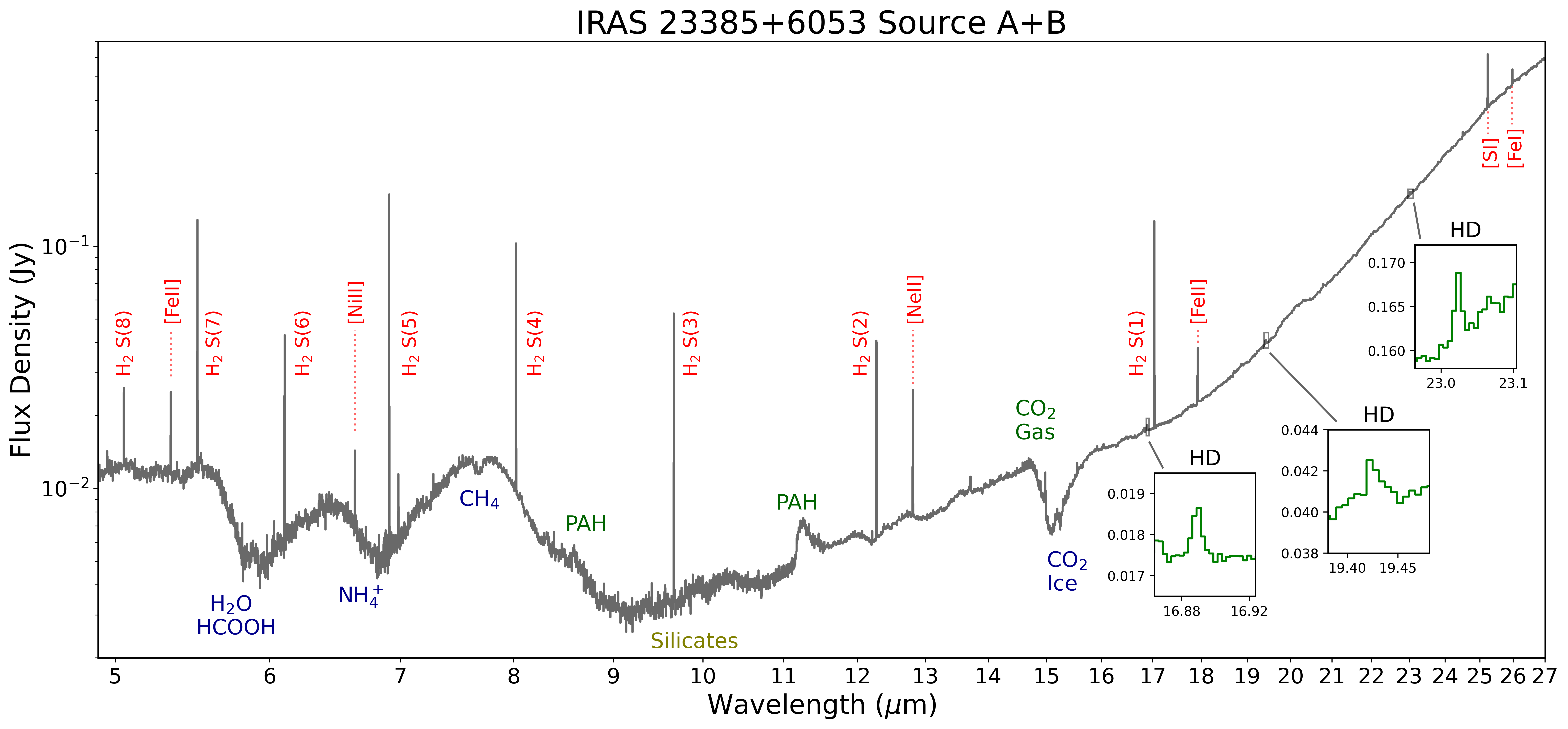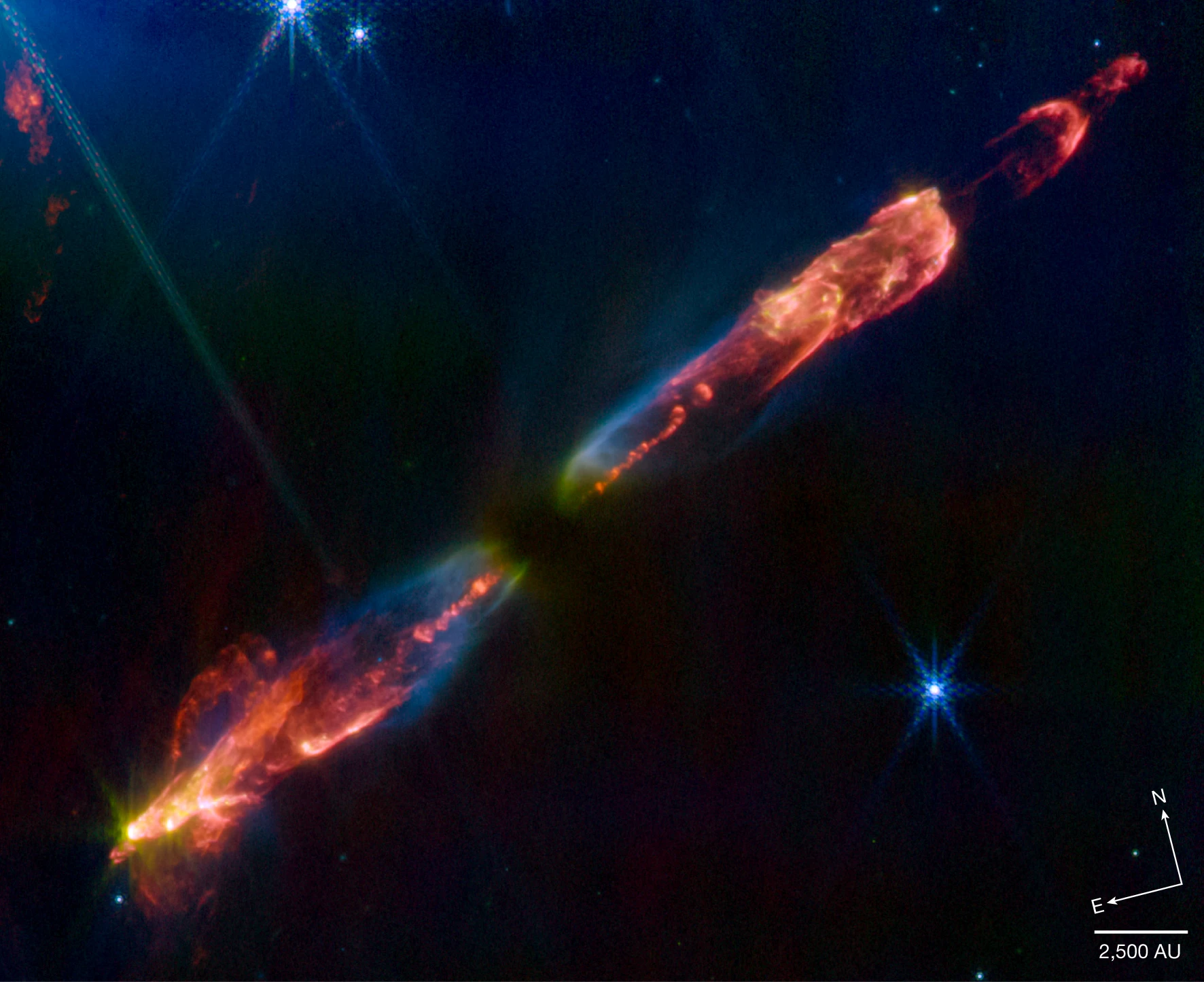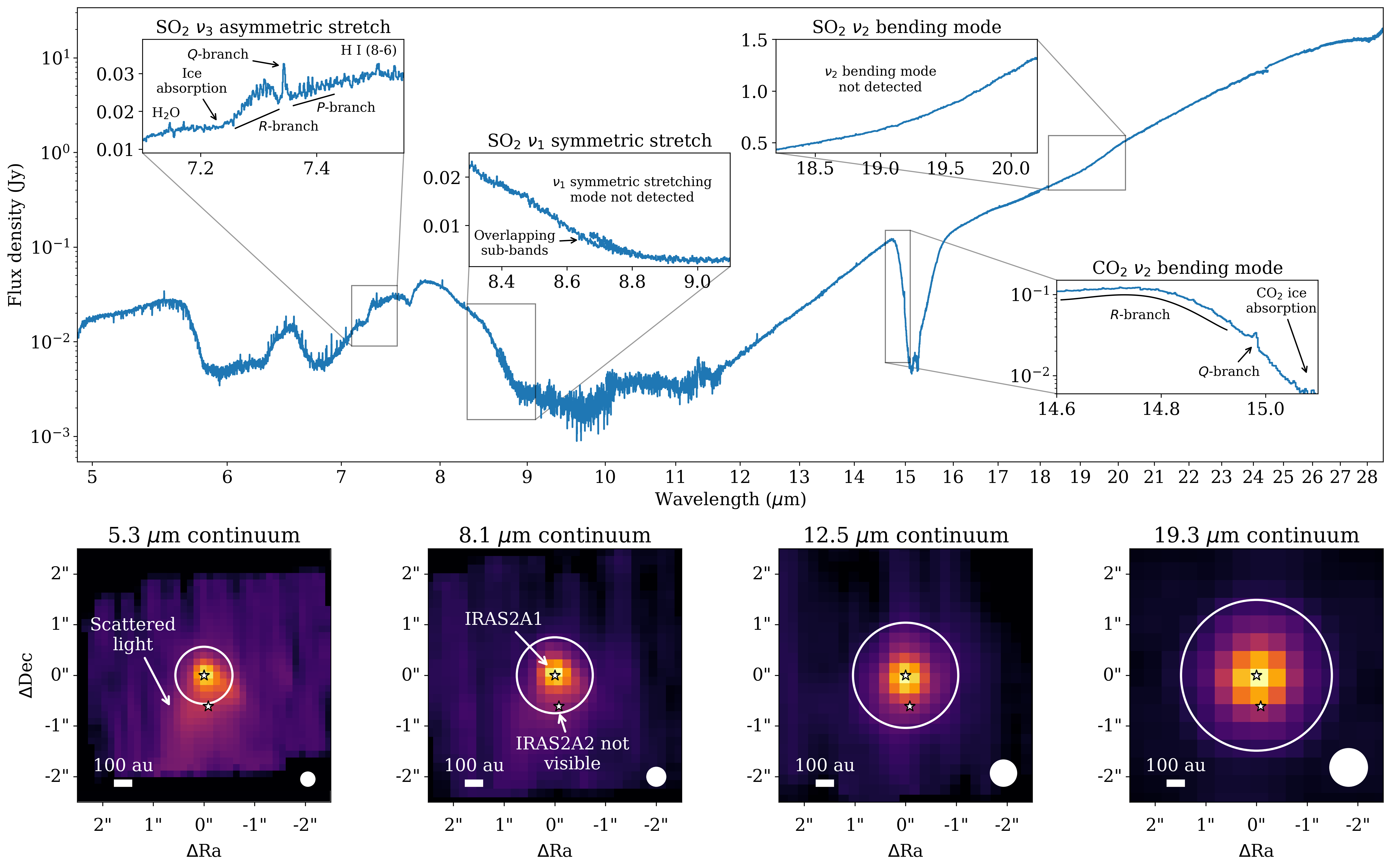Jwst Observations of Young protoStars (JOYS)
The JOYS+ program is a combination of three MIRI guaranteed time projects (PID 1290, PI: E. F. van Dishoeck; PID 1236, PI: M. E. Ressler; PID 1257, PI: T. P. Ray) and one NIRSpec guaranteed time project (PID 1186, PI: T. P. Greene) investigating the physical and chemical properties of protostars and their immediate environment. JOYS+ studies the physical characteristics of embedded disks, accretion signatures onto the protostars, feedback from the young protostars on their environment through primordial jets and outflows, as well as the chemical gas and ice constituents of the protostellar envelopes and disks. These goals are achieved with MIRI IFU spectral imaging between 5 and 28 micron, with NIRSPEC IFU data obtained for many of the sources (also through NIRSPEC GO Cycle 1 program 1960, PI: van Dishoeck) and NIRCAM imaging for the jet source HH 211. Both high- and low-mass protostars are targeted.

First results on the high-mass protostellar system IRAS23385+6053
A spectrum covering the full MIRI-MRS wavelength range is presented below for the high-mass protostellar system IRAS23385+6053. At the shortest MIRI wavelengths (~5 micron), two IR sources are identified. At longer wavelengths (>16 micron), the two sources are no longer resolved. In the spectrum below, several strong emission features, originating from H2 and atomic species such as Sulfur and Iron, are labeled in red. Several molecular emission features are also indicated, most notably HD, CO2, and PAHs. Furthermore, strong ice absorption bands are present such as H2O and CO2, as well as a deep silicate absorption band.
For more details, see the first JOYS papers on this source: Beuther et al. 2023 and Gieser et al. 2023.

Spectacular image of the HH 211 outflow
HH 211 is one of the most famous outflows from a low-mass protostellar system located in the Perseus molecular cloud. The JWST NIRCam image is presented below, showing in absolute spectacular detail the complex outflow from this young embedded protostellar system. The NIRCam image even made it to the cover of Nature. Besides the strong bow shocks on both ends of the outflow, the image shows that the inner jet is wiggling. The protostar itself is not visible in the center due to the strong extinction. Additionally, the South East bow shock was also observed with the NIRSpec IFU, showing a wealth of H2 and CO ro-vibrational lines. The full South Eastern flow is also mapped with the MIRI-MRS, which will follow in a subsequent publication.
For more details, including the analysis of the NIRSpec data on the South Eastern bow shock, see the recently published Nature paper: Ray et al. 2023. The press release of NASA can be found here.

Mid-infrared detection of SO2 in a low-mass protostar
The protostellar binary NGC 1333 IRAS 2A in the Perseus star-forming region is one of the most famous hot cores known. The JWST/MIRI-MRS data show a wealth of spectral emission and absorption lines across the full spectrum. One particular interesting emission band is that of SO2 around 7.35 microns. MIR features of SO2 had never been detected in emission or at all toward a low-mass protostar. After a careful analysis, including a comparison to high-resolution ALMA data, the SO2 emission likely originates from the hot core rather than from any shocked regions.
For more details on the detection of SO2 with MIRI-MRS and the comparison to high-resolution ALMA data, see the recently published paper by van Gelder et al. 2024

